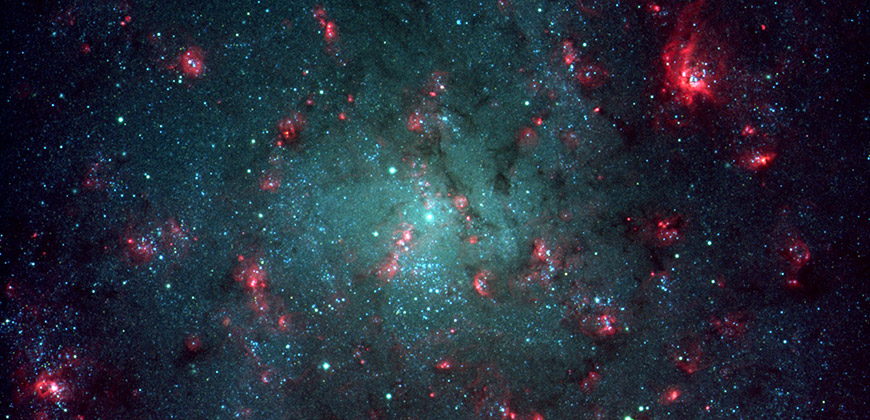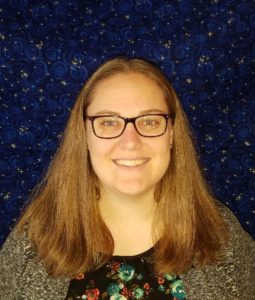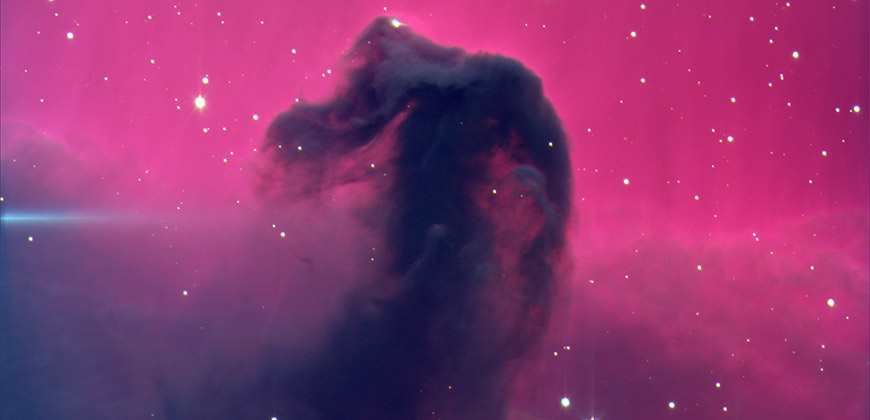Night skies to shine bright at CSU observatory
by Anne Manning | August 15, 2017 10:45 AM

The Triangulum Galaxy. Credit: Kevin Hardegree-Ullman, Karen Bjorkman, Cody Gerhartz, Lowell Observatory, and the National Science Foundation.
The Colorado State University community and the general public will soon get an up-close glimpse of our universe – or at least, our visible galaxy. The Department of Physics is set to resume regular public viewing nights at the Madison-Macdonald Observatory, on the first and third Fridays of the month through October.
 [1]
[1]Emily Hardegree-Ullman, astronomy and astrophysics instructor, will co-lead the viewing nights with Little Shop of Physics Director of Outreach and Logistics Heather Michalak.
“I love to hear the ‘oohs and ahhs’ when someone looks through a telescope at the moon, planets, stars, or galaxies,” Michalak said. “You never know if you will inspire someone to go into astronomy or other sciences. Astronomy outreach is truly out of this world.”
CSU has an observatory?
The Madison-Macdonald Observatory can be easy to miss. Tucked between the old University Greenhouses and the Insectary, at 1251 East Drive, the observatory first opened in the 1960s. In 1986, a dedication ceremony named the facility after two astronomy instructors who taught at CSU for a combined total of more than 60 years.
Over the last few decades, Roger Culver, longtime astronomy instructor who recently retired, had popularized the use of the observatory. Michalak and the Little Shop of Physics also held events there. As CSU’s newest astronomy expert, Hardegree-Ullman will continue the tradition.
The observatory’s main telescope is a 16-inch Schmidt-Cassegrain. The physics department also has access to donated telescopes for off-campus events.
Hardegree-Ullman’s favorite things to look at? The moon, and the Orion Nebula. Orion is a winter constellation, so the coming semester should offer good opportunities to see it. Saturn will also be visible after sunset for the next few months.
“The best part of my job has always been going out and observing,” Hardegree-Ullman said. “It’s fun to share that excitement with everyone else.”
Astronomy at CSU
In August 2016, Hardegree-Ullman joined CSU as the university’s sole full-time instructor of astronomy. Each semester, she teaches nearly 300 students in introductory astronomy. Next year, she will be responsible for a semester of astrophysics as well.
An observational astronomer who’s studied the presence of carbon in young star systems, Hardegree-Ullman earned her Ph.D. in astronomy from Rensselaer Polytechnic Institute. Before arriving at CSU, she taught at Front Range Community College and the University of Illinois.
Hardegree-Ullman has both teaching and outreach responsibilities as CSU’s astronomy instructor, and she has her hands full. Besides the public viewing nights, she appears regularly as a community lecturer, recently giving talks about astrobiology for the Northern Colorado Astronomical Society and at Red Feather Lakes Library. In September, she will speak at the Little Thompson Observatory’s public star night.
If you go
Public viewing nights at the Madison-Macdonald Observatory officially kick off Sept. 1. They will be held the first and third Fridays of September and October, starting about 8 p.m., weather permitting.
Scheduled dates:
Sept. 1
Sept. 15
Oct. 6
Oct. 20
Contact Heather Michalak[2] for more information.

The Horsehead Nebula. Credit: Kevin Hardegree-Ullman, Mike Cushing, Lowell Observatory, and the National Science Foundation.
- [Image]: http://source.colostate.edu/wp-content/uploads/2017/08/EmilyH-U.jpg
- Heather Michalak: mailto:heather.michalak@colostate.edu
Source URL: https://source.colostate.edu/night-skies-shine-bright-csu-observatory/
Copyright ©2024 SOURCE unless otherwise noted.